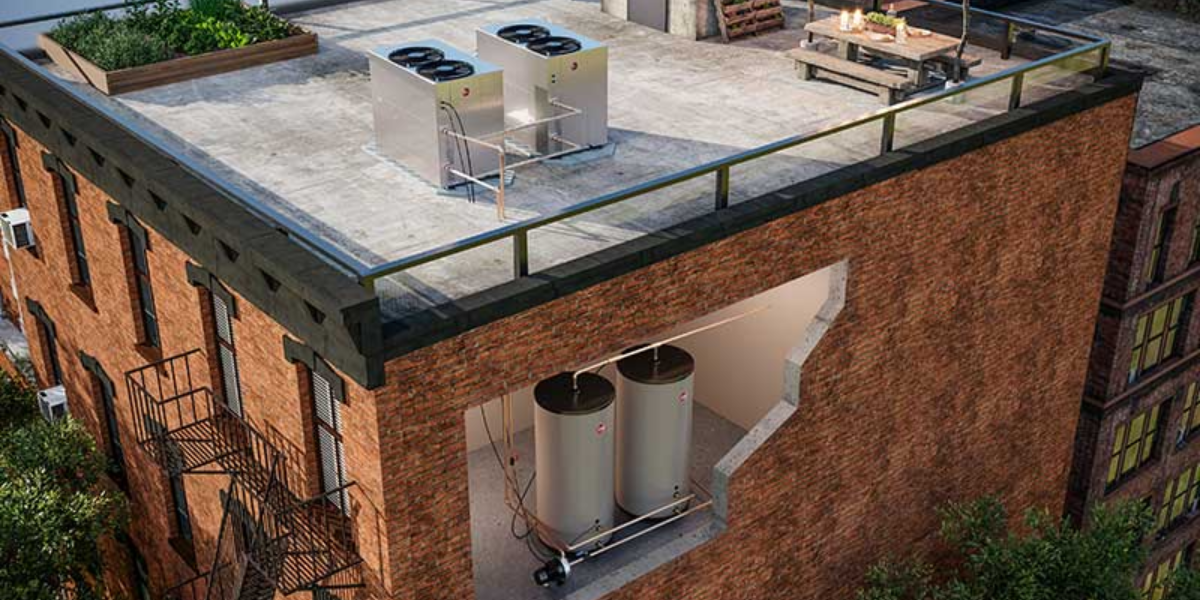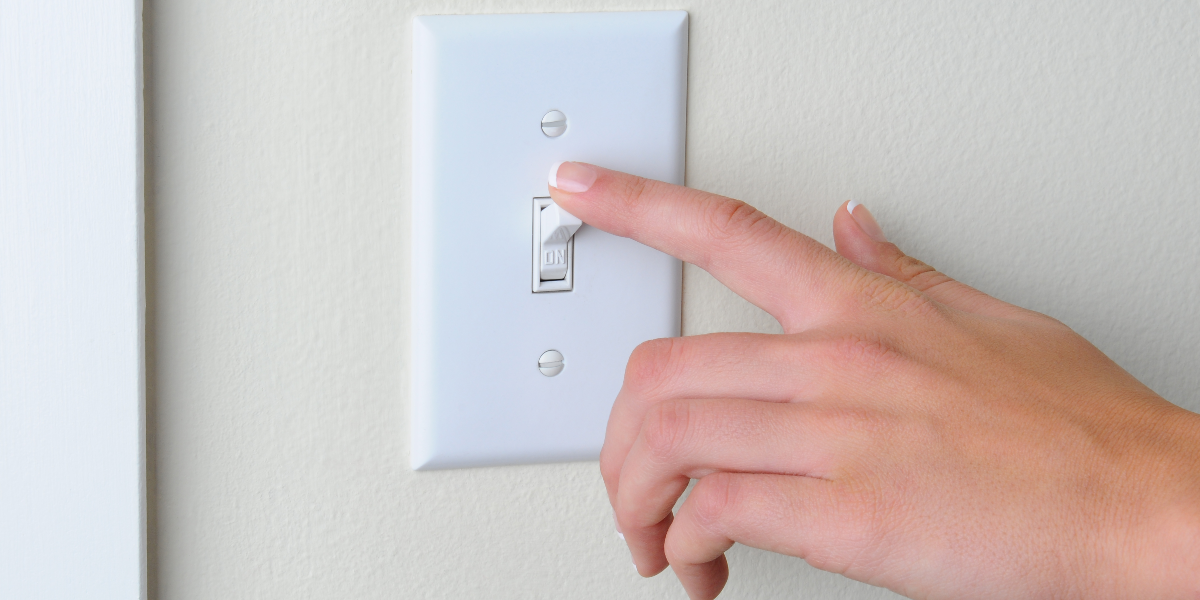Efficiency 101: The Defining Moments of Energy Efficiency
Let's Save Energy
Alliance to Save Energy's Blog

Welcome to the Alliance to Save Energy’s Efficiency 101 blog series! To celebrate our 45th anniversary year, we’ll be asking and answering basic questions around energy efficiency policies and technologies and exploring the forces that have led to the U.S. more than doubling its energy productivity in the past decades. Join us next week for a look at the major energy efficiency programs in the federal government.
2022 is a special year for the Alliance to Save Energy: We’re hosting our 15th EE Global Forum, the 30th Stars of Energy Efficiency Awards Gala, and celebrating the 45th anniversary of the Alliance itself. For the past 45 years, the Alliance has led on energy efficiency policy and advocacy. Telling the story of our organization is, in many ways, telling the story of energy efficiency in the U.S.
Without the energy efficiency investments made since 1980, energy consumption and emissions today would be 60% higher, and consumers would be paying nearly $800 billion more per year in energy costs. What policies and developments have led us to this point? To kick off our Efficiency 101 blog series, we’re taking a look back at the defining moments that have shaped the history of energy efficiency.
The Energy Crisis’ Solution
The genesis of U.S. energy efficiency policy came from the energy crisis of the 1970s. In 1973, Arab members of the Organization of Petroleum Exporting Countries (OPEC) imposed an oil embargo on the United States amidst the Yom Kippur War. Oil prices increased by up to 400% and American drivers waited in their cars for hours to fill up their gas tanks. By 1974, about 20% of U.S. gas stations ran out of gasoline to sell.
The federal government’s solution was to prioritize energy conservation. From 1975 to 1978, Congress passed a series of laws to establish the first fuel economy and household appliance efficiency standards, found the Weatherization Assistance Program, and create the first energy efficiency tax credits. Characterized as a national security issue, these energy conservation policies enjoyed broad bipartisan support. This bipartisan support for the issue led to the formation of the Alliance to Save Energy in March 1977 by Sens. Charles Percy (R-Ill.) and Hubert Humphrey (D-Minn.).
Embedding Energy Efficiency in U.S. Energy Policy
The ‘80s and ‘90s policy world focused on finding energy efficiency savings for consumers and updating standards put in place in the 1970s. The National Appliance Energy Conservation Act of 1987 established minimum energy efficiency standards for many household appliances and set into place a process and schedule for updating these standards. In 1992, Congress codified major energy efficiency programs into law, following years of legislative effort by the Alliance.
Opportunities for consumers to access the benefits of energy efficiency were rapidly expanded in 1992, when the Environmental Protection Agency introduced the ENERGY STAR label for energy-efficient products. Since then, ENERGY STAR has helped the U.S. save more than 3.5 billion metric tons of greenhouse gas emissions and $450 billion in energy costs.
Bigger and Better in the 21st Century
By the early 2000s, the U.S. had seen an increase in average home size, more and bigger vehicles being driven more miles, and rapid growth of energy-consuming devices. In fact, between 1970 and 2010, U.S. economic output had expanded more than three times – but demand for energy grew only 50%, due in large part to investments in energy efficiency.
As a new age of both digitalization and consumerism dawned, updating efficiency standards based on new technological capabilities was important. Reflecting an advancement in efficiency technology, the Energy Policy Act of 2005 set new minimum efficiency standards for many appliances and light fixtures and also codified energy efficiency tax incentives for highly efficient home upgrades, appliances, and vehicles. The Energy and Independence Security Act of 2007 took another leap forward by raising corporate average fuel-economy standards and authorizing industrial efficiency programs: measures that were expected to reduce national energy consumption by 7%. Finally, the American Recovery and Reinvestment Act of 2009 provided much needed funding boosts to existing programs to help households recover from the Great Recession. With expanded tax incentives for homeowners and electric vehicle drivers and funding for the Weatherization Assistance Program, it was the largest single investment in energy efficiency to date.
New Mediums, Traditional Values
In the past decade, digital technologies have revolutionized almost every part of our economy – including how we use energy. Recognizing that these technologies hold the promise of the next great gains in efficiency, the Alliance launched our Active Efficiency Collaborative in 2019 to explore opportunities to tie digital technologies to traditional efficiency measures and fully optimize the energy use of buildings, appliances, and devices.
Even as the technologies for energy efficiency have evolved, the longstanding support for energy efficiency across the aisle has stayed largely the same even in an increasingly partisan political landscape. For example, the Energy Efficiency Improvement Act of 2015 was “a small but important package” that unanimously passed a divided Senate and provided incentives to cut energy use in commercial buildings through a Tenant Star program within ENERGY STAR. More recently, the passage of the bipartisan Energy Act of 2020 included a permanent extension of the Sec. 179D tax deduction for energy-efficient commercial buildings, funding increases for ENERGY STAR and the Building Technologies Office, and provisions for reducing energy waste in buildings (including with Active Efficiency technologies). Finally, last November’s bipartisan Infrastructure Investment and Jobs Act marked the largest public works legislation in decades, including billions of dollars for energy efficiency programs. These provisions included $3.5 billion for the Weatherization Assistance Program as well as $225 million to better implement updated building energy codes.
But there remains a burning need to scale up implementation of energy efficiency policy nationwide. If the global community hopes to restrict global warming to 1.5 degrees Celsius as outlined in the Paris Agreement, the rate of improvement in energy efficiency must triple from current levels. Underserved communities – including low-income, Black, Latinx, and Native American households – continue to face disproportionately high energy burdens and lack affordable and reliable access to energy efficiency improvements that could reduce their energy costs. Although we have seen the energy efficiency sector expand dramatically in the past 45 years, there is still so much more room to grow.
Meeting the Moment
Much as the oil crisis was a defining moment of the 1970s, spurring the energy efficiency industry as we know it today, the Alliance’s 45th anniversary coincides with a new moment of change. Today, the urgency of the climate crisis and the inequities laid bare by the global pandemic present another defining moment: ensuring a just energy transition. And energy efficiency is just the tool we need to make this happen.
Throughout the past 45 years, energy efficiency has provided the cheapest, cleanest path to an energy-secure, prosperous, and sustainable economy – and it can do so again. Energy efficiency offers an immediate solution to rising energy prices and represents one of the largest employment sectors in the energy industry, not to mention that it is the single most effective strategy we have for addressing climate change.
Recent reports have revealed that over the past decade, energy productivity has improved by 16.1%, meaning that the economy has seen impressive growth without corresponding growth in energy use. But a just transition requires us to move faster. As we work to substantially increase energy productivity through investments in energy efficiency, we must prioritize bridging the gap to the underserved communities that most need efficiency’s cost-savings and economic opportunities. Looking back on the history of energy efficiency gives us insight into the role it must play in the future – and is a call for us to get the solutions in place that will meet our current defining moment.
RECENT BLOG POSTS
STAY EMPOWERED
Help the Alliance advocate for policies to use energy more efficiently – supporting job creation, reduced emissions, and lower costs. Contact your member of Congress.
Energy efficiency is smart, nonpartisan, and practical. So are we. Our strength comes from an unparalleled group of Alliance Associates working collaboratively under the Alliance umbrella to pave the way for energy efficiency gains.
The power of efficiency is in your hands. Supporting the Alliance means supporting a vision for using energy more productively to achieve economic growth, a cleaner environment, and greater energy security, affordability, and reliability.



